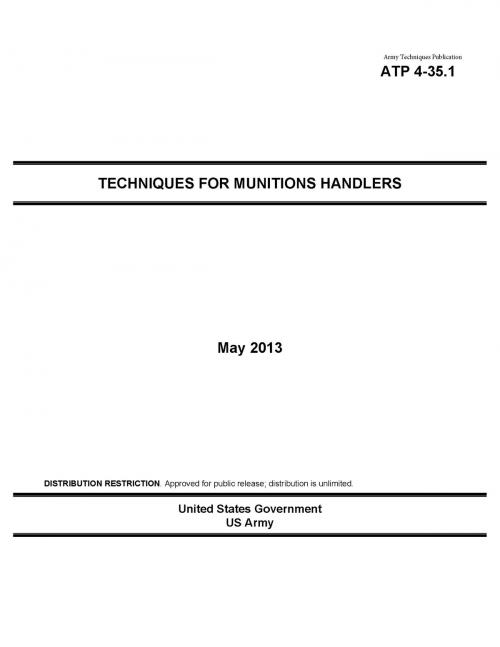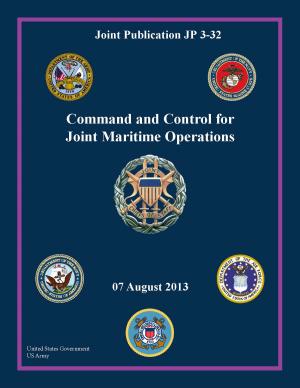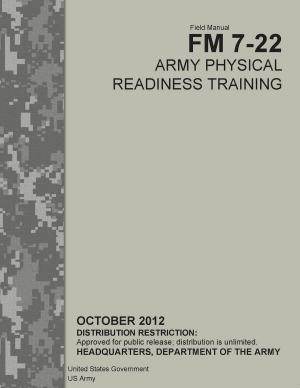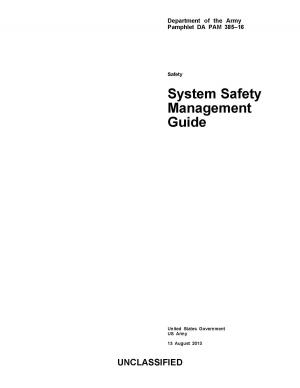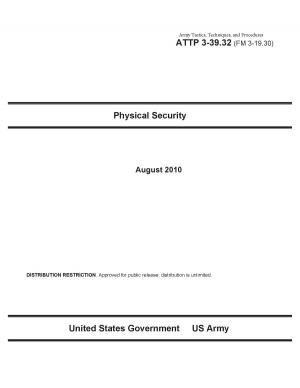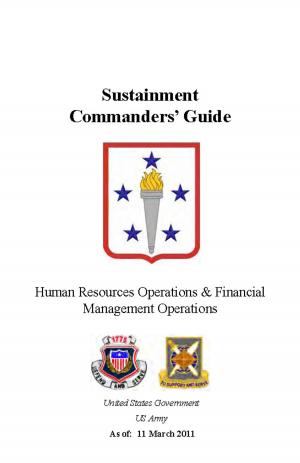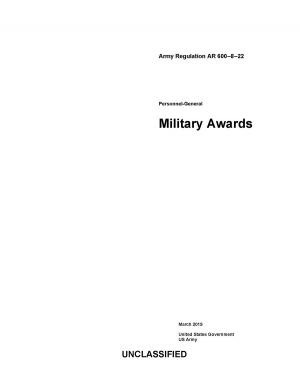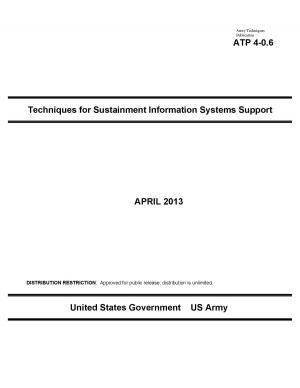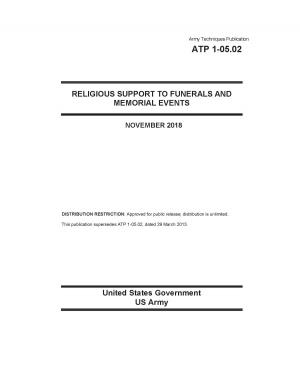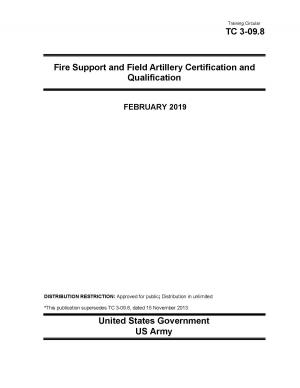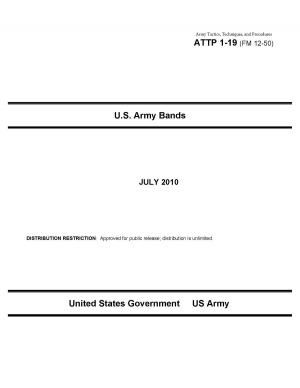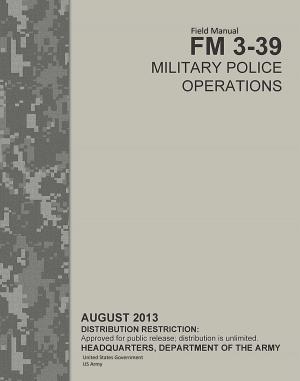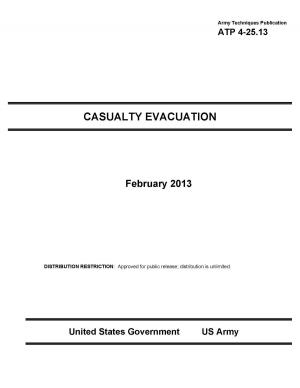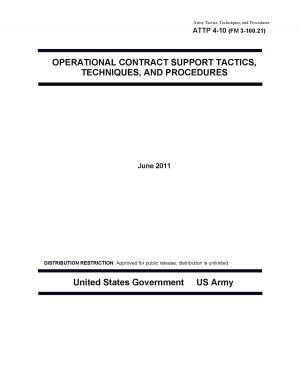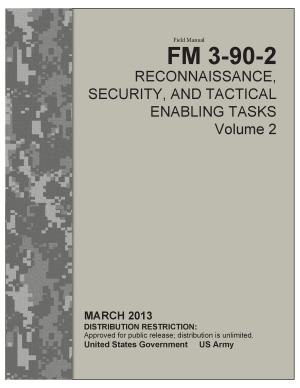Army Techniques Publication ATP 4-35.1 Techniques for Munitions Handlers May 2013
Nonfiction, Reference & Language, Study Aids, Graduate & Professional, Armed Forces, Science & Nature, Technology, Military Science, Reference, Guides & Handbooks| Author: | United States Government US Army | ISBN: | 1230000141934 |
| Publisher: | eBook Publishing Team | Publication: | June 14, 2013 |
| Imprint: | Language: | English |
| Author: | United States Government US Army |
| ISBN: | 1230000141934 |
| Publisher: | eBook Publishing Team |
| Publication: | June 14, 2013 |
| Imprint: | |
| Language: | English |
ATP 4-35.1, Techniques for Munitions Handlers, provides doctrine on munitions handling techniques for all munitions handlers in the Army regardless of assignment or military occupational specialty. It is intended to provide greater emphasis on explosives safety during all munitions handling operations.
The principal audience for ATP 4-35.1 is commanders, staffs, supervisors, and Soldiers in all organizations at all levels that have roles in munitions handling. This includes not only personnel in ammunition support activities but any unit, operation, or task where munitions are handled. Trainers and educators throughout the Army will also use this manual.
Commanders, staffs, and subordinates ensure their decisions and actions comply with applicable US, international, and, in some cases, host-nation laws and regulations. Commanders at all levels ensure their Soldiers operate in accordance with the law of war and the rules of engagement.
ATP 4-35.1 applies to the Active Army, Army National Guard/Army National Guard of the United States, and United States Army Reserve unless otherwise stated.
The proponent of ATP 4-35.1 is the United States Army Ordnance School. The preparing agency is the United
States Army Combined Arms Support Command (USACASCOM), G3 Doctrine Division.
Soldiers, civilians and contractors that handle munitions for the Army perform a vital role of keeping their units and Army personnel safe while maintaining and providing the effective munitions needed to accomplish the mission. Munitions handlers, as identified in this manual, include every person that plays a role in handling, storing, moving and maintaining munitions. This includes professional munitions handlers, such as ammunition officers, ammunition technicians, 89B30/40s, Quality Assurance Specialist (Ammunition Surveillance) (QASAS), and QA/QC ammunition inspectors. It also includes more generalized professions such as accountability personnel, supply personnel, transportation personnel and storage managers.
All personnel involved in munitions support and handling need to understand the environment in which they operate. This manual provides information on Class V support to unified land operations to include the Joint environment. Joint integration of ammunition support is crucial to unity of effort in most operational areas.
It is imperative for all personnel engaged in munitions support operations have an understanding of the various staff organizations that have a role in munitions planning and support. It will be necessary for an ammunition support activity to contact the higher, lower, or adjacent headquarters (both sustainment and operational) to coordinate support, report status, request technical assistance, or request additional resources. This manual will present the roles and mission of the various munitions organizations so that proper coordination can be conducted.
Ammunition supply operations are addressed to include receipt, turn-in, issue, shipment and retrograde. Storage procedures and consideration are presented and maintenance functions are addressed. Logistic Information Technology is presented both in terms of specific Information Systems needed to perform munitions handling functions and Information Technology enablers that will assist personnel in accomplishing the mission.
This manual is intended to provide munitions handlers the information necessary to safely perform munitions operations and fully support the operational requirement. The primary focus of explosives safety is to reduce the probability and limit the damage caused by unintended initiation of munitions. Safety, fire protection, prevention, and safety awareness during munitions is every soldier’s responsibility. The guidelines in this publication should be followed as closely as possible within the constraints and restrictions of the tactical situation.
ATP 4-35.1, Techniques for Munitions Handlers, provides doctrine on munitions handling techniques for all munitions handlers in the Army regardless of assignment or military occupational specialty. It is intended to provide greater emphasis on explosives safety during all munitions handling operations.
The principal audience for ATP 4-35.1 is commanders, staffs, supervisors, and Soldiers in all organizations at all levels that have roles in munitions handling. This includes not only personnel in ammunition support activities but any unit, operation, or task where munitions are handled. Trainers and educators throughout the Army will also use this manual.
Commanders, staffs, and subordinates ensure their decisions and actions comply with applicable US, international, and, in some cases, host-nation laws and regulations. Commanders at all levels ensure their Soldiers operate in accordance with the law of war and the rules of engagement.
ATP 4-35.1 applies to the Active Army, Army National Guard/Army National Guard of the United States, and United States Army Reserve unless otherwise stated.
The proponent of ATP 4-35.1 is the United States Army Ordnance School. The preparing agency is the United
States Army Combined Arms Support Command (USACASCOM), G3 Doctrine Division.
Soldiers, civilians and contractors that handle munitions for the Army perform a vital role of keeping their units and Army personnel safe while maintaining and providing the effective munitions needed to accomplish the mission. Munitions handlers, as identified in this manual, include every person that plays a role in handling, storing, moving and maintaining munitions. This includes professional munitions handlers, such as ammunition officers, ammunition technicians, 89B30/40s, Quality Assurance Specialist (Ammunition Surveillance) (QASAS), and QA/QC ammunition inspectors. It also includes more generalized professions such as accountability personnel, supply personnel, transportation personnel and storage managers.
All personnel involved in munitions support and handling need to understand the environment in which they operate. This manual provides information on Class V support to unified land operations to include the Joint environment. Joint integration of ammunition support is crucial to unity of effort in most operational areas.
It is imperative for all personnel engaged in munitions support operations have an understanding of the various staff organizations that have a role in munitions planning and support. It will be necessary for an ammunition support activity to contact the higher, lower, or adjacent headquarters (both sustainment and operational) to coordinate support, report status, request technical assistance, or request additional resources. This manual will present the roles and mission of the various munitions organizations so that proper coordination can be conducted.
Ammunition supply operations are addressed to include receipt, turn-in, issue, shipment and retrograde. Storage procedures and consideration are presented and maintenance functions are addressed. Logistic Information Technology is presented both in terms of specific Information Systems needed to perform munitions handling functions and Information Technology enablers that will assist personnel in accomplishing the mission.
This manual is intended to provide munitions handlers the information necessary to safely perform munitions operations and fully support the operational requirement. The primary focus of explosives safety is to reduce the probability and limit the damage caused by unintended initiation of munitions. Safety, fire protection, prevention, and safety awareness during munitions is every soldier’s responsibility. The guidelines in this publication should be followed as closely as possible within the constraints and restrictions of the tactical situation.
